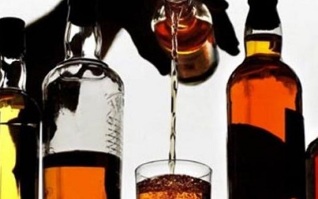
British scientists have come to a terrible conclusion and tried to identify the risk group to which alcohol abusers belong. Men who consume eight servings in the evening for a week (about one and a half liters of wine) and women who drink six servings (slightly more than one liter of wine) of alcohol are classified as potential alcoholics. People who, by their own definition, think they drink a lot are also at risk. Determining the amount of alcohol, calculating the "critical dose" and what dose of alcohol will already be dangerous to the body are described below.
How to achieve mild drunkenness
A liver disease specialist claims that as people age, people mistakenly believe they know how to consume alcohol without harming their health. The liver does not immediately indicate a defect, and a glass of wine after dinner can be fatal for him.
According to a distinguished doctor, addiction is a key problem for alcoholics. He advises you to avoid daily consumption of gradual drinks, for example, for three days in a row, not to drink at all. So, once the body returns to its tone, it separates itself from the effects of alcohol, it does not have to use large amounts to feel mild intoxication and achieve a relaxing effect.
Drunkenness
The problem is that people often drink more than the body can accept without consequences. And they ask themselves the question: if I feel good after taking half a bottle of wine one night, why would I give up the pleasure? This is not enough for drunkenness, but it is for health damage. Few know that such a dose is five doses of alcohol, which significantly exceeds the daily norm not only for women but also for men.
How much can a woman and a man drink
The non-physical parameters of the stronger and weaker differ from the recommended doses for alcohol consumption. Therefore, there is a big difference in how much a man needs to drink to stay within honesty and how much a woman needs to do this.
Abuse when a woman consumes six or more servings of alcohol a day and a man consumes eight. You should also consider your health, height, weight, and age to determine how much alcohol you can consume.
Number of servings of alcohol in popular beverages:
- beer: 0. 5 l. - about 3;
- bor 12%, 170 ml - 2. 1;
- liqueur: 17%, 50 ml - 0. 9;
- effervescent: 12%, 17 ml - 2. 1;
- vodka: 37. 5%, 25 ml - 0. 9;
- whiskey: 40%, 35 ml - 1, 4.
Alcohol tests for drivers
A driver is considered sober if the test shows no more than 0. 16 milligrams of alcohol per 1000 ml of air on exhalation. Any excess is recognized as alcohol poisoning. Many people are interested in the question: how much can you drink to “cheat” the alcohol probe? Ideally, not at all. Up to fifty milligrams of wine or 20 milligrams of champagne per hour, as such alcoholic beverages dissolve in the blood fairly quickly. Strong drinks should not be consumed. It is also worth remembering that the concentration of alcohol in the blood depends on many factors: weight, time of intake, and so on, so it is very difficult to pinpoint the exact ratio allowed.
Look at life soberly, and while you enjoy yourself with your favorite alcoholic beverages, don’t ignore the sense of proportion.
























